3D printing of lenses for glasses and virtual reality helmets
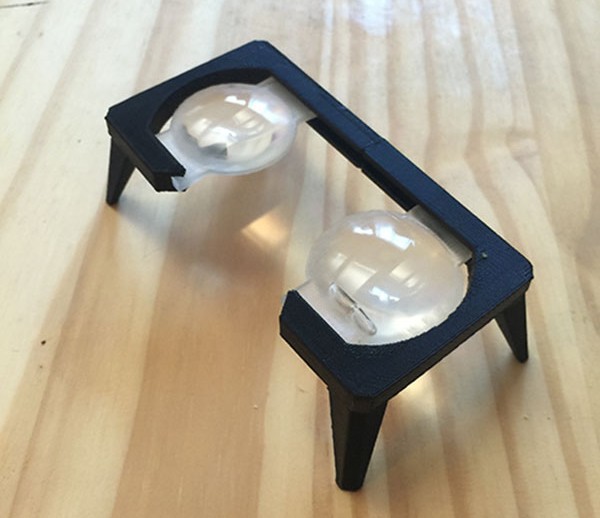
Recently, gadgets for immersion into virtual reality, such as Google Cardboard, Oculus Rift and others, have become extremely popular. In the case of Google Cardboard and its counterparts, the construction is generally extremely simple, it can be literally assembled from scrap materials. Only a smartphone with the appropriate application is needed. All the rest is a cardboard "box" on the head with fixed lenses. The screen of the smartphone is divided into two parts, each eye looks through the lens at its half of the screen.
A cardboard, a smartphone, a rubber band, a magnet and a pair of velcro can be found at home. The problem is only with the lenses, you can hardly find them in the apartment. American engineer Florian Maurer (Florian Maurer) decided to correct this flaw - and tried to print such lenses for the iPhone 6 Plus independently on a 3D printer.
First, Florian printed the frame for the glasses by changing the CAD model in Onshape.com. After printing the master model, the casting mold was molded from transparent rubber, then the lenses were made from transparent resin. In subsequent experiments, the lenses were printed immediately. The surface was ground with an emery paper of grit P220-7000 and additionally polished. The author admits that the process is rather tedious and laborious. Getting clear, transparent optics is incredibly difficult. Nevertheless, for the first attempt at 3D printing of lenses on a commercially available printer, it turned out quite well.
')
Florian Maurer compared his work (homemade lenses + iPhone) with the quality of the picture in the Oculus Dev Kit virtual reality helmet - and was pleased with the result.
So, it all starts with a lens mount. The model chosen at first allows each lens to be independently adjusted, adjusting its position relative to the eye. This means that the mount is quite versatile.

Headband is not yet provided, but for testing you can do without it, holding the smartphone with both hands.

To protect against noise exposure eyepieces slightly pressed to the face. True, to actively turn his head in this case is not very convenient.
Lenses
The most interesting is how to make lenses. For example, for Google Cardboard such lenses are recommended for eight dollars with a diameter of 25 mm with a focal length of 40 mm. We take them as a sample to start.
Once again, the OnShape.com editor helped to create the CAD model, here is the result .
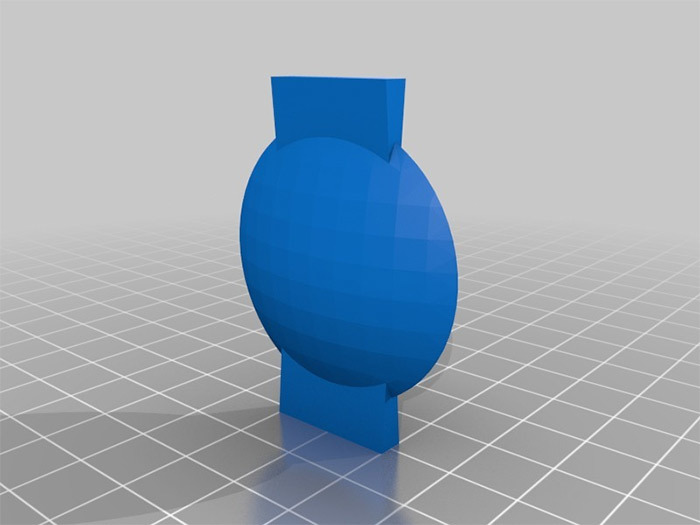
For the manufacture of molds for casting used special rubber OOMOO 30 .

Then endless grinding and polishing by hand. Even in comparison with the poorest mass-produced lenses, homemade products do not focus very well, and the picture is blurred. But this is the first experience. The author says that the effect of presence in virtual reality still persists. Although it is difficult to focus on individual objects, but in VR it is not too important, especially during movement. It was obvious that the only problem was a better polishing.
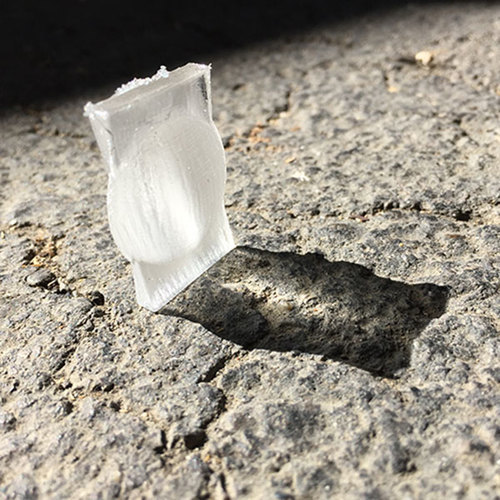
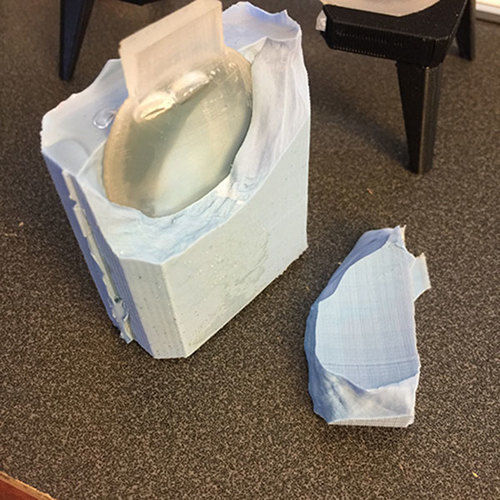
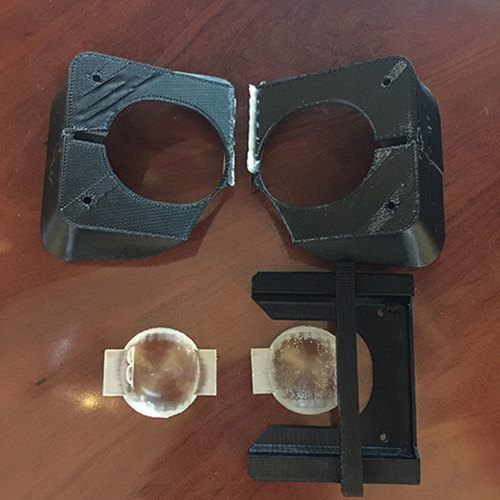

Florian drew lessons from his mistakes on the first prototype - and literally in 30 minutes made the second version of the mounting much better quality. It is simple and lightweight, and the lenses move closer to each other or move further.
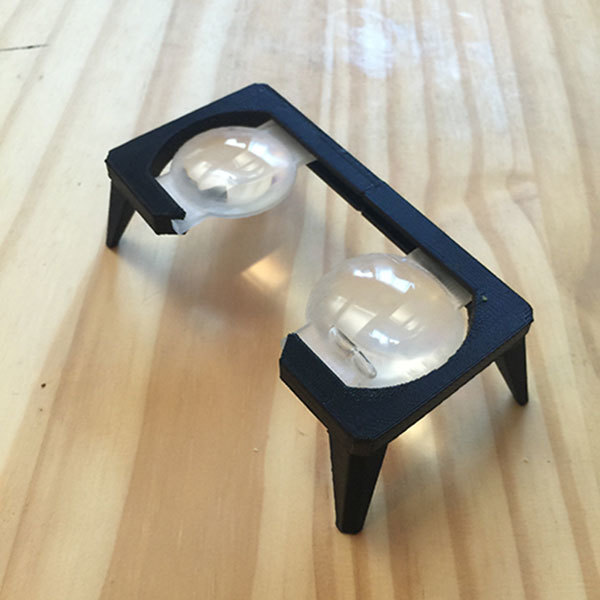
Already here, Florian used 3D printing of lenses and tried to sand them, not manually, but with the use of a drilling machine with emery paper. Unfortunately, he never found a way to avoid an unacceptable funnel in the center of the lens. The author says that he studied the episode of the “How It’s Done” program on the Discovery Channel, which is dedicated to the production of ordinary glasses for improving vision (video below), and suspects that during the manufacturing process, you must somehow rotate both the lens and the abrasive material at the same time, to avoid the central funnel.
Apparently, in the future, 3D printing will allow you to independently produce lenses for virtual reality glasses and for ordinary glasses that improve vision. Handles for such glasses and frames of an individual form, in principle, can be printed right now.
Source: https://habr.com/ru/post/368915/
All Articles